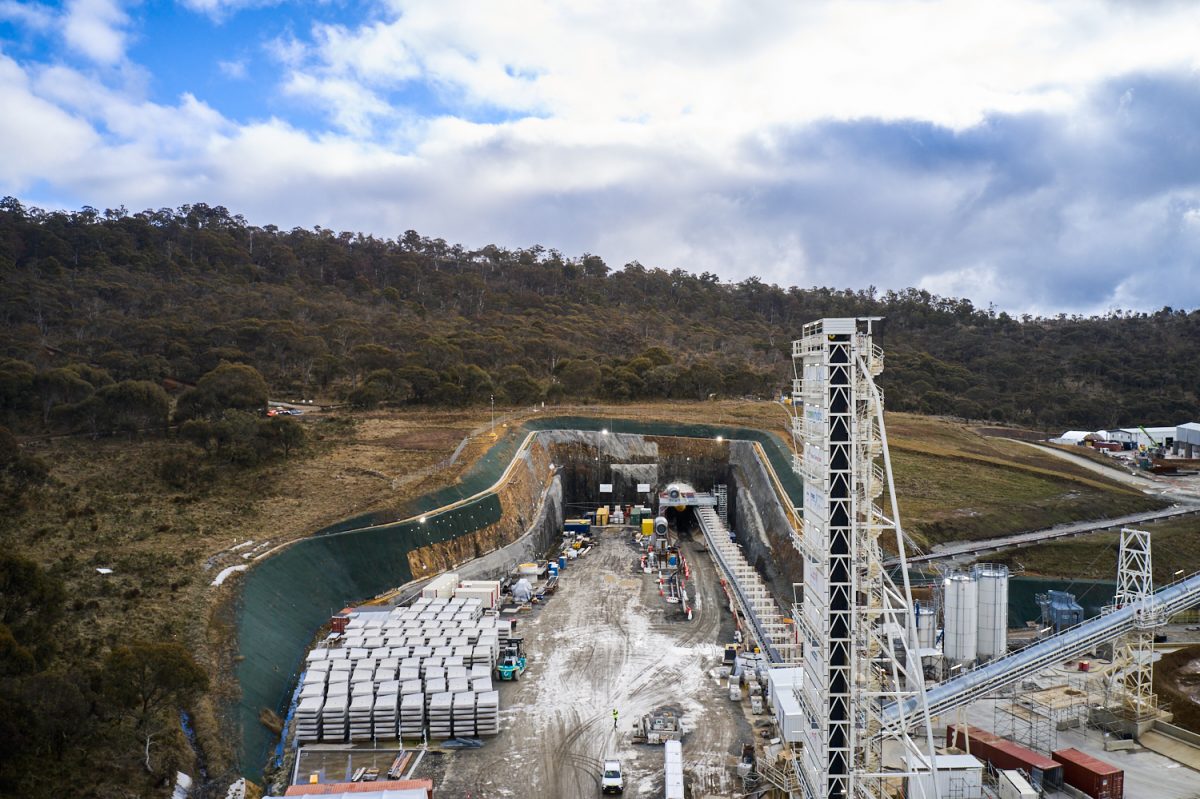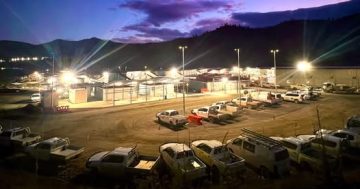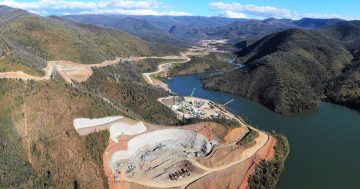
Tunnelling of the Snowy 2.0 channel entrance at Tantangara has restarted following the NSW Government’s approval for the project’s planning modification. Photo: Snowy Hydro Ltd.
Before the Snowy 2.0 project announcement that Tunnel Boring Machine (TBM) Florence has begun operating again, the NSW Environment Protection Authority (EPA) issued the government-owned energy company a Clean Up Notice. Now Snowy Hydro Limited (SHL) must reduce the impact of elevated nitrate levels in surface and groundwater within Kosciuszko National Park, which it reported in August.
Following its initial report to the EPA, a prevention notice was issued in the same month requiring SHL to investigate the source and extent of contamination, assess relevant pollution controls and develop a plan to address the problem.
The suspected environmental and water impacts came from contaminated drill and blast spoil near storage areas on the Snowy 2.0 construction site.
EPA executive director operations Jason Gordon said the EPA was working with SHL to ensure that all conditions of the Clean Up Notice were complied with to ensure the environmental protection of the surrounding Kosciuszko National Park.
“In addition, officers are investigating to determine what has occurred at the site and the potential area affected,” he said.
According to the notice, SHL must immediately stop adding any additional material containing high nitrate levels to spoil areas, and implement a program to pump and treat the alleged polluted water. SHL must also execute a hotspot identification program to pinpoint high-nitrate areas within existing spoil piles and take action to prevent any further pollution.
Throughout the clean-up, SHL is required to provide the EPA with monitoring data and meet weekly for updates on its progress.
In response to Region’s request for comment, an SHL spokesperson confirmed that elevated levels of nitrates had been identified in the groundwater at certain Snowy 2.0 sites, including the Lobs Hole spoil site.
“Snowy Hydro and its project delivery partner Future Generation Joint Venture are actively working with the NSW Environment Protection Authority to satisfy the requirements of their recently issued Clean Up Notice in respect of those elevated nitrate levels,” the spokesperson said.
“This includes a range of action items to ensure Snowy 2.0 is meeting its environmental obligations, including the removal of groundwater for treatment and disposal through approved onsite treatment plants.
“The Snowy 2.0 project continues to be focused on achieving the highest environmental standards during the construction of the major pumped-hydro expansion of the Snowy Scheme.”
Last week, the TBM Florence began tunnelling operations in closed (slurry) mode, with progress going ”slow and steady”, according to SHL. Specialist experienced personnel are managing the process, which, before starting, required extensive geotechnical investigations on the headrace adit alignment and ground improvement works.
SHL CEO Dennis Barnes said the milestone came after a delay caused by soft ground conditions and the emergence of a sinkhole above the machine.
“We were very pleased to receive the green light for tunnelling at Tantangara to recommence and to allow remediation of the subsidence area,” Mr Barnes said.
“The conditions of approval were developed through the extensive review, public consultation and determination process, and will be strictly adhered to as we get back underway with excavation of the tunnel.
“The Snowy 2.0 delivery team is acutely aware of its responsibilities working in the sensitive environment of Kosciuszko National Park. We are focused on achieving excellent environmental outcomes throughout construction of this pumped-hydro expansion of the Snowy Scheme and critical infrastructure for Australia’s transition to renewable energy.”
To enable the close monitoring of surface conditions as TBM Florence advances, the project’s western boundary has been extended above the machine at Tantangara. SHL said monitoring would continue until there was a minimum of 100 metres between the TBM and the surface.
Meanwhile, excavation of the tailrace tunnel at Talbingo has reached about 1000 m since TBM Lady Eileen Hudson relaunched in July. Manufacturing is underway for Snowy 2.0’s six pumped-hydro units, which are expected to generate up to 2200 megawatts of power for the national electricity grid.
And one of the 13 x 7.5-metre spiral cases was recently delivered to Lobs Hole after a 442 km night-time journey from Port Kembla in Wollongong.




